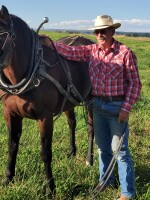Last week, the French food company Danone together with the Environmental Defense Fund, announced a plan to drastically cut their milk providers’ methane output, and according to the company, this is an effort to meet its new climate commitment “to lower methane emissions 30 percent by 2030.” But they’re handing off that task to the dairy farmers who are producing the fresh milk used in the company’s dairy products. However, some researchers are finding that cattle may not be as big of a contributor to global warming as some climate activists claim. Dr. Galen Erickson, a University of Nebraska-Lincoln Beef Feedlot Extension Specialist points out that there’s data indicating that grasslands completely offset the emissions of cattle in some years, as well as research findings that methane is degraded pretty quickly to carbon dioxide and then recycled. Penn State research has shown that the plains bison were producing about 85 percent as much methane as is produced today, and that the carbon dioxide increase in the past century isn’t related to ruminant production. This link provides more information on this topic: https://www.tsln.com/news/top-down-control-danone-says-it-will-cut-cows-methane-by-30-percent
In 2021, the National Resource Defense Council, Earthjustice, Food Animal Concerns Trust, Public Citizen and other public health and consumer groups petitioned the U.S. Food and Drug Administration to stop livestock producers from administering subtherapeutic levels of antibiotics in feed to livestock herds to prevent disease. The agency denied that petition. Recently, those organizations filed a lawsuit asking the court to set the agency’s denial of the petition aside, and require that the FDA either grant or reconsider the petition, because they contend that the practice is causing growing antibiotic resistance in people. The lawsuit states that today, about two-thirds of all antibiotics sold in the U.S. are for use in food-producing animals, a practice that was started in the 1950s. In the lawsuit, the groups also states that they don’t want "short-term" antibiotic uses to end because they are necessary for treatment of sick animals.
The past three years have been tough for many beef cattle producers, because of the pandemic and drought, but producers who have hung on may be rewarded with better times in 2023, according to Cattle Fax market experts. Cattle Fax is a beef industry research firm specializing in beef industry analysis and information. They told attendees at the recent Cattle Industry Convention in New Orleans that 2023 could be a record price year for all classes of cattle. Improvements are expected because hay prices will be dropping, exports are strong, as is consumer demand for beef. They predict that weaned calves will be $29 higher per hundredweight than last year, cull cows will sell for $100 per hundred weight, which is $20 higher than last year, due to demand for hamburger, and bred cows will range from $1,900 to $2,300 per head as producers start to rebuild the cow herd.
Farmers and ranchers I’ve talked to recently are pretty happy about the heavy snow and improvements in drought status here in the Four Corners Region. But Rhett Larson, professor of water law at Arizona State University, pointed out that "the drought is so critical that this recent rainfall is a little like finding a $20 bill when you've lost your job and you're being evicted from your house."



